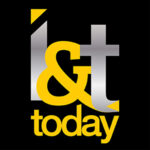Medicine has always been a people-focused endeavor. After all, its core mission is to help and heal. Its sole purpose is to shepherd people through some of the most important, and often the most difficult, moments in their lives.
That does not mean, however, that there is no room for technology in the healthcare industry. Indeed, tech innovation has long been central to the practice of medicine. Never has this been more apparent than today, with Software as service (SaaS) programs proving increasingly critical to the healthcare industry.
This article examines the role of SaaS in revolutionizing healthcare, transforming patient experience, and improving health outcomes in ways that once were unthinkable.
What Is Health SaaS?
SaaS programs are technologies that are designed to automate functions that once would have fallen to humans. These technologies free human workers to attend to other duties that can’t be performed by machine technologies. Best of all, SaaS systems generally perform these tasks with far greater speed, accuracy, and efficiency than humans are capable of. The result is both greater productivity and profitability for your company, as well as an enhanced experience for your customers.
In the domain of healthcare, health SaaS systems are being used to perform–and optimize–an array of functions. SaaS technologies can do anything from booking patient appointments to performing virtual COVID-19 screenings to reading medical images.
The enhanced speed and accuracy of these technologies mean that patient care is more effective and expeditious, even as healthcare provider workloads are lightened. In the midst of a prolonged and worsening labor shortage in the healthcare industry, SaaS technologies are proving instrumental in supporting patients and care providers alike. SaaS automation, for instance, is helping to reduce the risk of burnout among clinicians while at the same time improving patient outcomes.
SaaS for Visitor Management
In our post-pandemic era, perhaps one of the most significant trends in SaaS technologies is the capacity to automate patient scheduling, screening, check-in, and check-out. For example, a robust visitor management system enables a practically contactless experience for customers (and patients) from their initial registration to their departure.
In medical facilities, visitor management systems can ensure that vulnerable patients maintain safe social distancing while signing in, making payments, and checking out. Not only does this support patient safety during in-office visits, but it also makes the overall intake and departure process more efficient for medical office staff and patients alike.
Patients no longer have to wait on a receptionist to sign in or settle their accounts and office personnel no longer have to devote much of their time and labor to managing patient arrivals and departures. The result is a more streamlined experience for patients and staff and a more cost-effective operating model for the practice.
SaaS for Patient Triage, Screening, and Scheduling
In addition to optimizing patient throughput, SaaS technologies are also being used to great effect in patient triage, screening, and scheduling. For instance, health chatbots are increasingly being used to screen patients for various health conditions, including potential COVID-19 infections. This helps to ensure that rigorous COVID-19 quarantine protocols are activated when a potentially infected patient presents themselves for care.
The ability to screen and triage patients through chatbots derives from the integration of artificial intelligence (AI) systems in most SaaS technologies. The result is highly responsive technologies that can adapt to and accommodate the evolving needs of individual patients. For instance, SaaS tools such as patient scheduling technologies will connect patients with healthcare providers based on an array of criteria, including matching patients with the appropriate healthcare provider who accepts the patient’s insurance.
The ability to use SaaS technology to identify and complete the necessary processes makes it much easier and more efficient for medical staff to safely sequester patients in exam rooms rather than relegating them to a crowded waiting area. Doctor appointments look different after the pandemic, so SaaS helps to keep this process safe and streamlined.
Scheduling software also makes it possible to optimize the flow of patients while reducing wait times, eliminating scheduling gaps, and preventing office overcrowding. Bookings can be adjusted, for instance, when patients cancel or reschedule or when demand is expected to be at its heaviest.
SaaS, AI, and Patient/Provider Experience
Another revolutionary achievement in the arena of SaaS is the capacity of these systems to optimize relationship management processes. Much like the use of health chatbots to facilitate patient screening and triage, automated customer relationship management (CRM) systems are increasingly being deployed to support patient education and manage patient inquiries.
Chatbots and related AI-driven technologies, for instance, are increasingly able to address patients’ questions and concerns without requiring access to an office administrator or healthcare provider. Traditionally, when patients had a health-related question, they would need to be connected to a nurse, pharmacist, or physician.
This often involved significant wait times and no small amount of frustration for the patient. Health SaaS enables patients to receive responses to their questions and concerns promptly, which is paramount to patients’ overall satisfaction with the care they receive.
In addition to addressing patients’ inquiries, these technologies are also capable of providing in-depth patient education, with AI customizing health literacy processes in response to the patient’s unique needs and concerns.
However, it’s not only patients who are benefiting from health SaaS. Clinicians are also harnessing the tremendous power of AI-driven health SaaS. Through the use of AI machine learning, for example, healthcare providers are able to diagnose diseases and define highly personalized, evidence-based treatment plans with greater speed, accuracy, and efficacy than ever before.
The Takeaway
Software as a Service (SaaS) has proven its tremendous potential across most every industry. Perhaps nowhere is the power of SaaS more evident, however, than in the field of healthcare. Indeed, health SaaS has revolutionized the healthcare industry, transforming patient care, alleviating the burden of the health labor shortage, and generating patient outcomes and experiences in ways that were once unimaginable. Through the automation of visitor management, patient screening, triaging, education, medical diagnostics, and treatment planning, the healthcare system is realizing ever-greater levels of efficiency, productivity, and efficacy.











